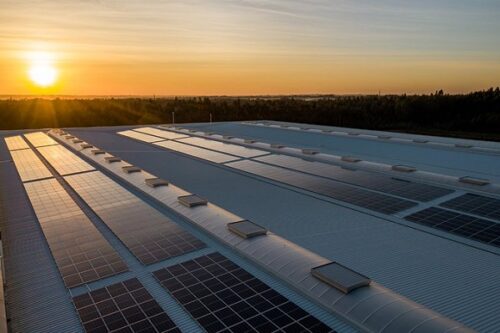6 June 2023
Mike Redwood points out how tanning areas around the world offer a unique opportunity to shift to renewable energy and secure power independence. From ILM.

The transition to net-zero inevitably involves finding a renewable solution for electricity and heating. Tanneries usually have good local opportunities to use roofing and adjacent land for solar, wind and varying types of ground source or geothermal energy, plus solid wastes can be used to produce gas.
Knowing this, encouraging tanneries to move quickly is an obvious thing to do. At its simplest, the big international leisure operator of ten-pin bowling in Canada and the UK, Hollywood Bowl Group, has just announced strong results despite analysts’ expectations of problems from the big jump in energy costs to heat its large spaces.
When interviewed, the CEO indicated that the company hedged energy costs forward through 2025 and was installing solar panels on the large roof area the bowling allies require to control costs in the future. Solar power, combined with battery storage for use at night, would likely cover most of the business’ energy needs.
Rays of sunshine
Solar is generally one of the easiest renewable energy solutions for a business to manage independently, but as well as finding the capital, regulations, protests and politics often get in the way of moving forward easily.
Fitting into a national grid can be beset with tight rules around access and control. Countries such as China and India have been very successful at expanding their national grid system to get closer to 100% access to electricity for their citizens, but this can lead to tighter restrictions on ownership of large battery walls and other indications of “independence”. In the Indian subcontinent, many tanneries have diesel generators to fill in during power cuts so it would be logical to allow local use of renewables in the same way.
A few years ago, enthusiasm was high to find small, local and independent power supplies because setting up national grids would be slow and costly, particularly in emerging economies such as Africa. Renewable energy offers just that local opportunity and would be particularly good for many of tannery communities around the world from China to Mexico, Brazil to Ethiopia, Italy to Indonesia.
In fact, most major tanning areas have such communities where wind, solar and ground source can all be explored along with pyrolysis or digestion for solid waste. New types of very large heat pumps can now generate big amounts of hot water from wastewater or sea water and are being used in places like the Port of Gothenburg in Sweden. Heat pumps can be used for cooling as well as heating.
Car parks offer immense potential and good aesthetics
It is sometimes said that placing solar panels on roofing is too expensive, although increasingly commercial roofing is seen as a missed opportunity by governments. Now, car park areas are being seen as offering immense potential and are helped by offering good aesthetics to calm to the protesting groups who dislike wind or solar farms (and all the “paraphernalia” of pylons and substations) on land. For a tanning zone, car park solar mixed with some of the newer “rooftop” wind turbines could offer considerable potential at affordable costs. Most of these would also work for a large standalone tannery and avoid it being forced to relocate.
As the world decarbonises, more power will come through an electric grid, using a lot of technology to keep the balance correct through times of varying demand – a much harder job with dispersed renewables than a small number of large power producing plants. This will make them more vulnerable to hacking, unless suitable redundancy and resilience can be built in, along with a lot of robustness.
The automated electronic passport readers in the UK failed recently, creating chaos for a few hours. The cause was probably inadequate investment and poor system integration rather than an interfering foreign power, but it demonstrates how dangerous vulnerabilities can easily be created. If tanneries and tannery communities can retain some local independence in terms of power management, the historic power outages can be eliminated, and the cost of power reduced and controlled.
We must support nations moving power from the new areas where renewables are generated to the exiting population and industrial centres but, as tanneries, the more power independent we can be, the better.
我们为皮革、物料及时装业界创造面对面洽谈的机会,为客户缔造实质商机。我们云集世界各地的商家,让他们寻找新的合作伙伴,发掘潜在客户或供应商,并掌握业界最新发展。
我们主办多个专注时尚及生活潮流的商贸展览会, 为这不断变化的行业,提供最全面的买家及参展商服务,方便他们了解急速转变的行业环境,并预测来季趋势。

使用条款 | 隐私政策 | APLF 可持续发展